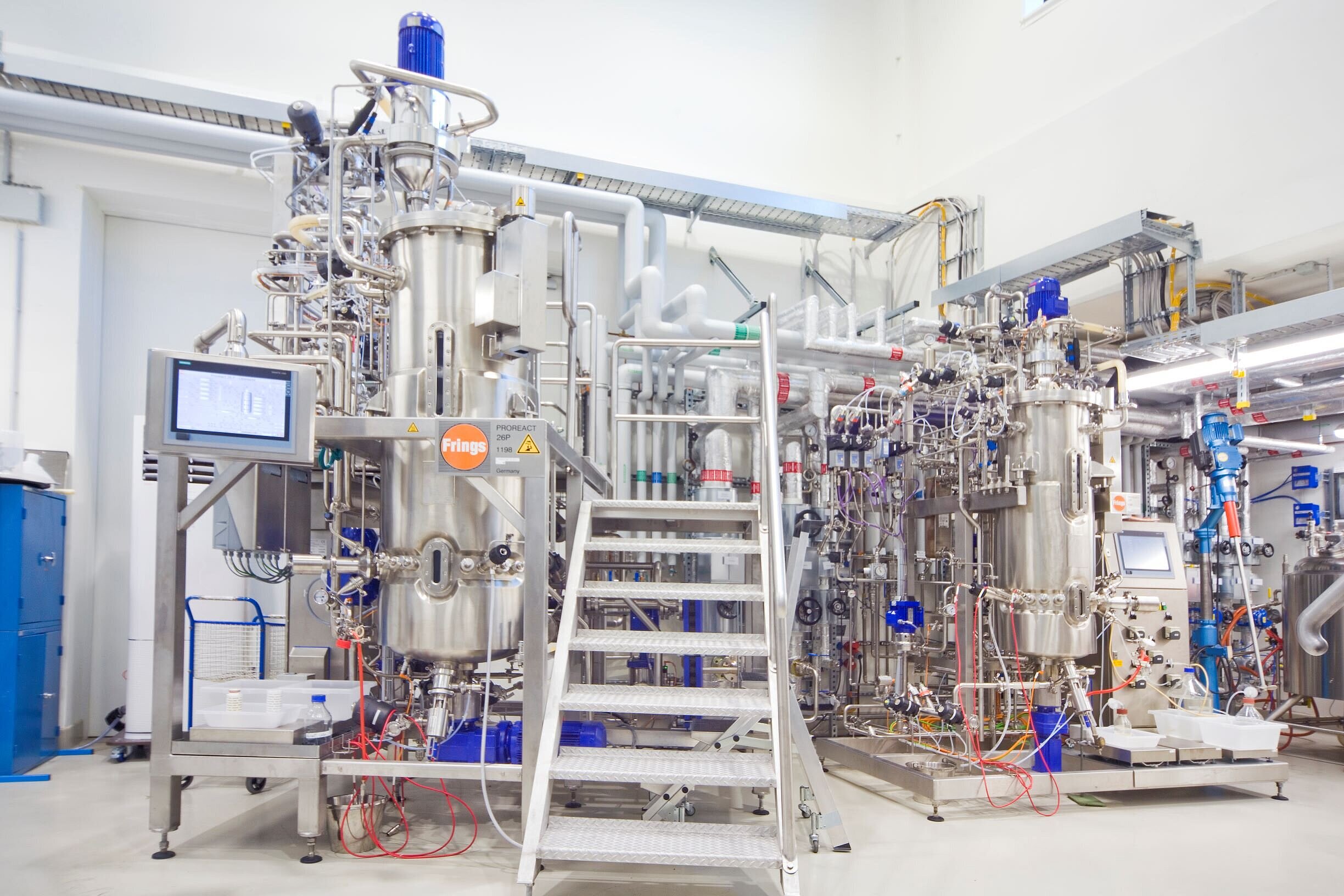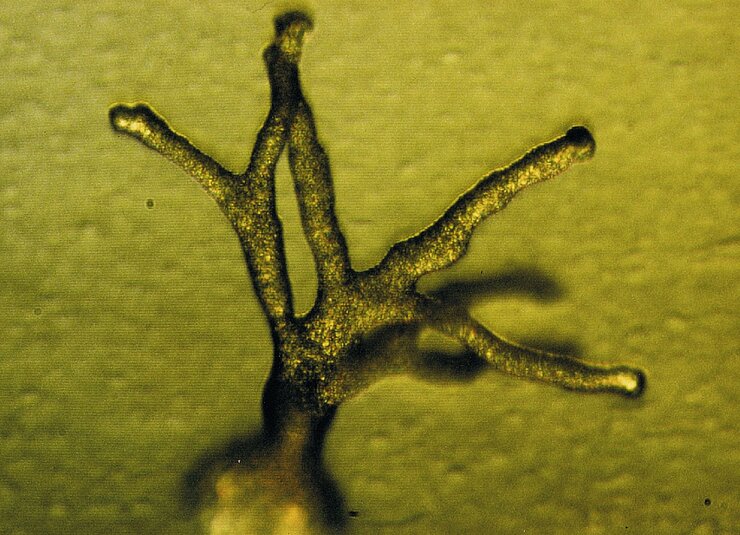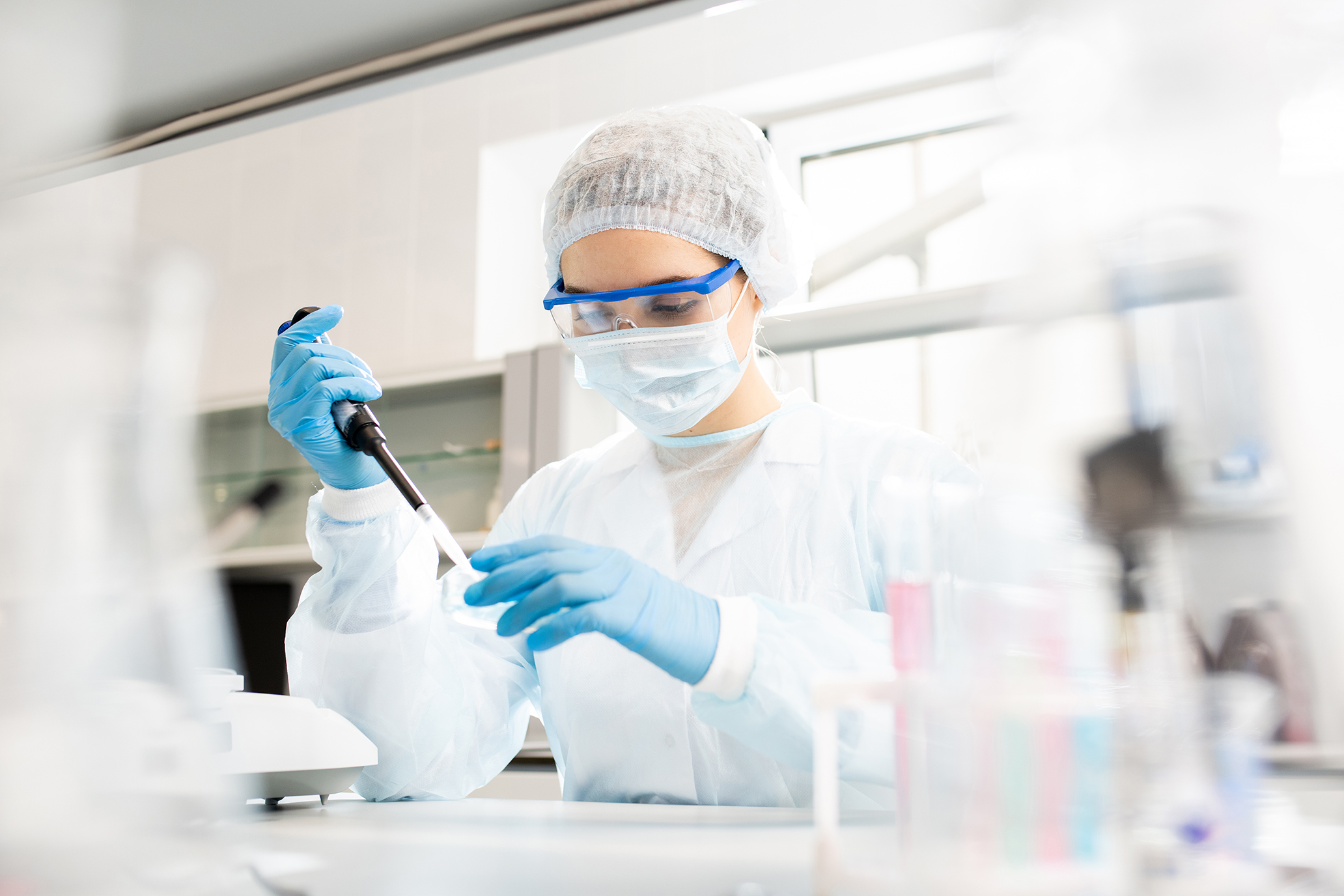Infections with worms from the filarial group, also known as filariasis, can lead to river blindness and, if left untreated, to elephantiasis - a disease in which extremities become greatly enlarged due to destruction of the lymphatic vessels. The lives of those affected are severely impaired. More than 21 million people in Africa are infected with the nematode Onchocerca volvulus, the causative agent of river blindness. Around one in ten of them go blind. In 2009, Prof. Achim Hoerauf and his team found an effective drug to combat the worms in the form of corallopyronin A. “This is a natural antibiotic that can be used successfully in patients, as it primarily targets the bacteria that live as symbionts in the worms and are responsible for their survival. As a result, the worms themselves are also destroyed,” says Hoerauf.

New antibiotic against river blindness and lymphatic filariasis pathogens
Clinical testing imminent
Corallopyronin A, which is derived from an environmental bacterium (the myxobacterium Corallococcus coralloides), was recognized as an effective antibiotic against staphylococci by scientists at the HZI in the 1980s. As a result of the new findings on its effectiveness against filariae, research into its use in humans began. At the German Center for Infection Research (DZIF), the research teams are now developing the substance into a drug. The antibiotic is effective against the endosymbionts of worms from the filarial group and numerous other bacteria. Translational research is currently in the final phase of preclinical testing and the first clinical trials are scheduled for 2025/2026. At the HZI, a biotechnological process has been established with which the active substance can be produced in sufficient quantities and purity for toxicity testing. Important milestones along the way were the development of a myxobacterial strain for the heterologous production of the active substance by Rolf Müller's Department “Microbial Natural Products” at the Helmholtz Institute for Pharmaceutical Research Saarland (HIPS) and the development of an industrial production process in Marc Stadler's Department “Microbial Drugs” at the HZI. In the meantime, the production process has been transferred to an industrial scale (15,000 liters). The HIPS is a site of the HZI in collaboration with Saarland University.
A manufacturing company, which is the world market leader for some cancer therapeutics and can also produce the antibiotic on an industrial scale for clinical trials, was recently contracted.
Characterization of the active substance and dosage in humans
As part of the funding from the GHIT fund, the active ingredient is to be produced in accordance with the strict requirements of Good Manufacturing Practice (GMP) and the final tests for possible side effects are to be completed in order to identify an initial dose for treatment in humans. “The new findings and the upcoming clinical trial phase of our research for use in humans represent great hope for those affected who cannot avoid infection in their environment and have no access to effective medication,” says Prof. Hoerauf. ”I am very pleased that a global company like Eisai is also involved in the field of neglected tropical diseases and has entered into this cooperation with us.”
The academic cooperation partners of the project are the University Hospital Bonn (Institute of Medical Microbiology,Immunology and Parasitology, Prof. Achim Hoerauf), the University of Bonn (Department of Pharmaceutical Technology and Biopharmacy, Prof. Karl G. Wagner), the HZI (Department “Microbial Drugs”, Prof. Marc Stadler) and the Helmholtz Institute for Pharmaceutical Research (Department “Microbial Natural Products”, Prof. Rolf Müller).
![Dr Charlotte Schwenner [Translate to English:] Charlotte Schwenner](/fileadmin/_processed_/6/9/csm_Charlotte_Schwenner_f5c416d9d0.jpg)



![[Translate to English:] [Translate to English:]](/fileadmin/user_upload/HZI/Media_Center/Newsroom/2023/Fermentation20211122_150b__c_HZI_MarcStadler.jpg)